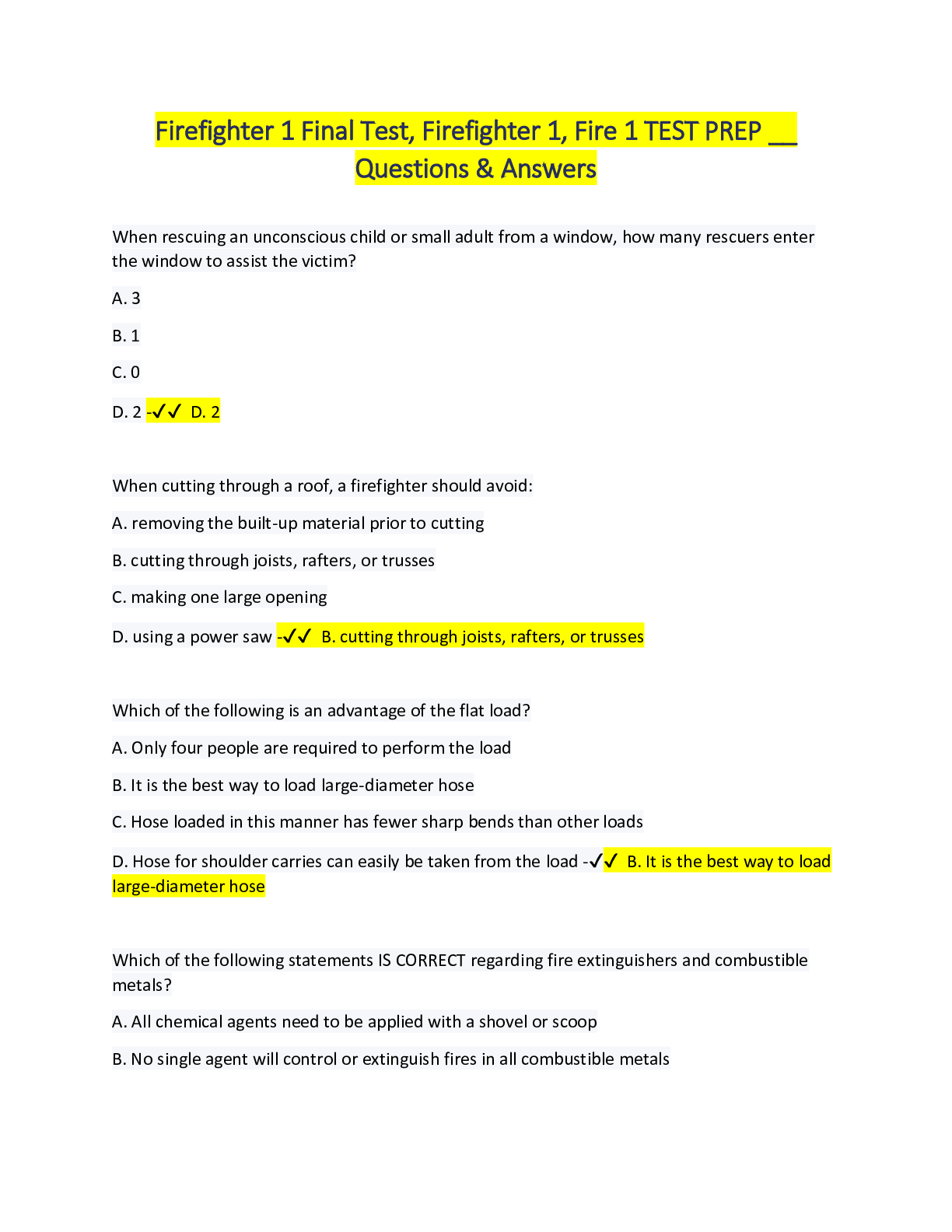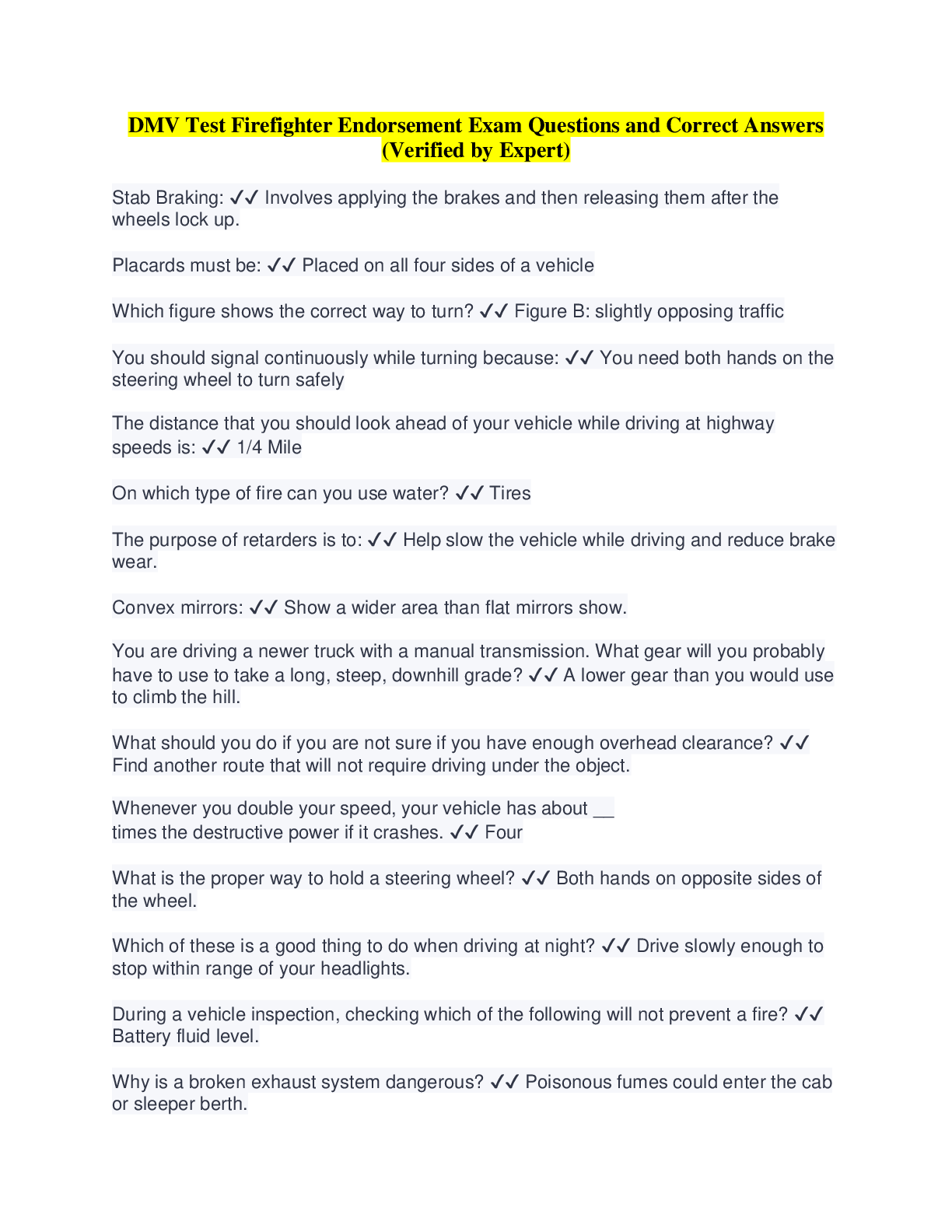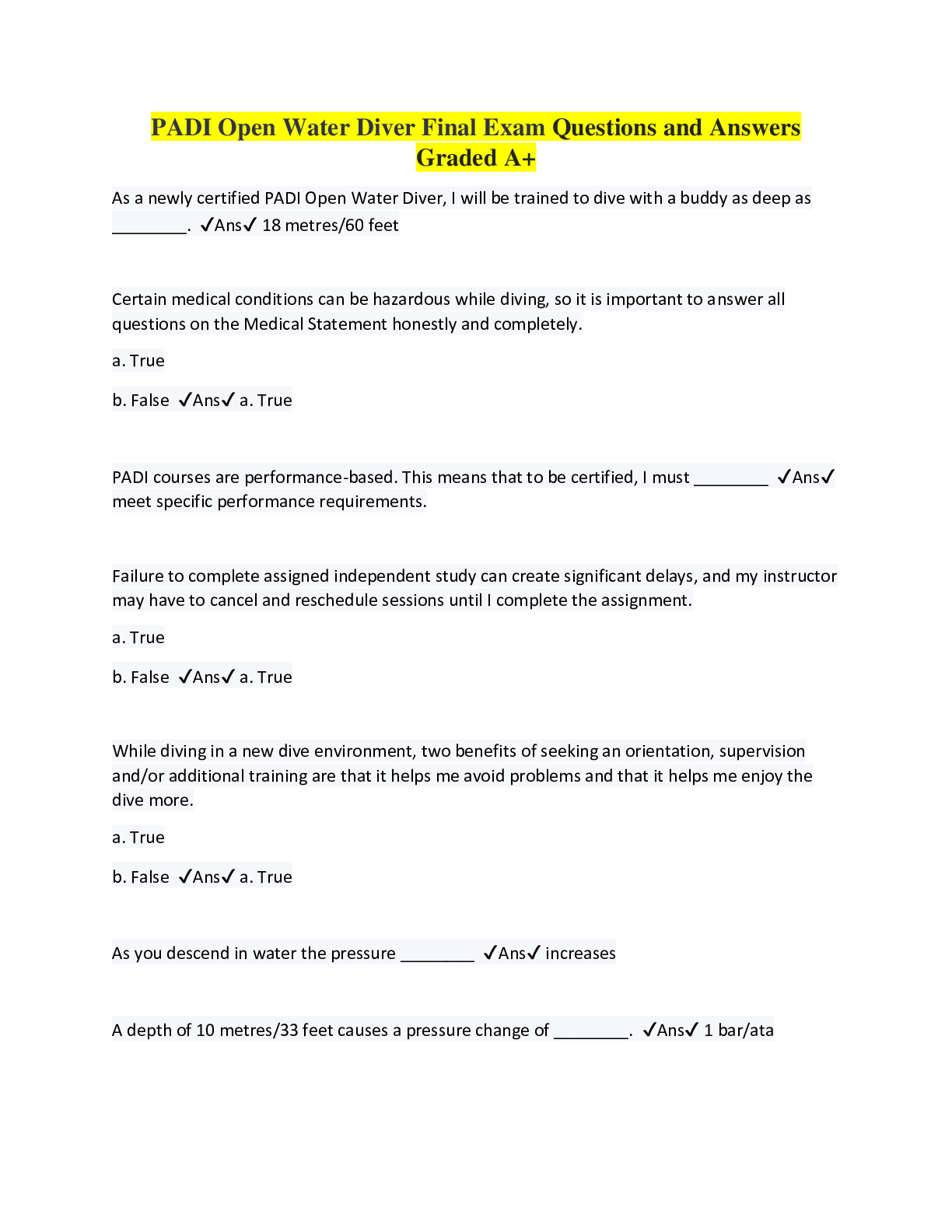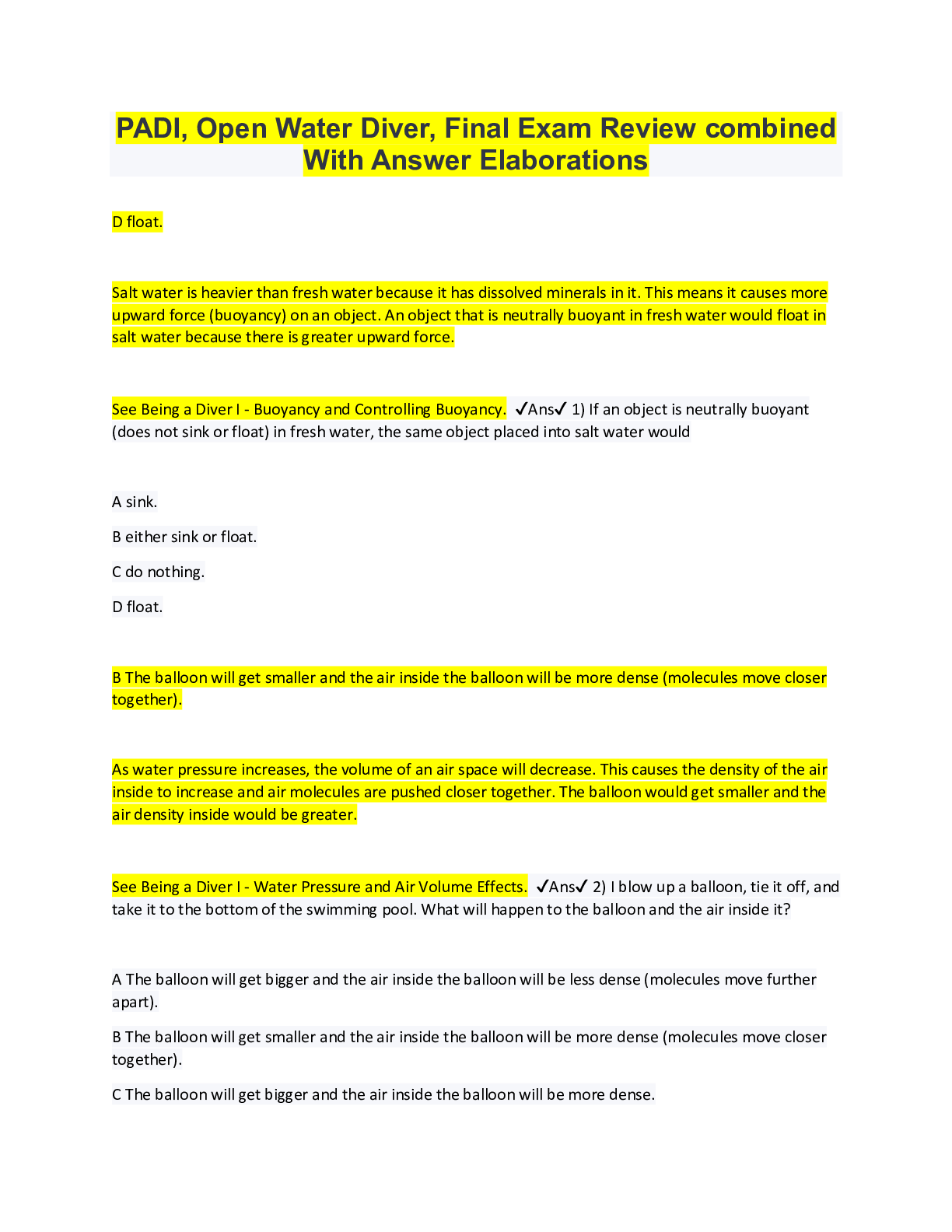Health Care > QUESTIONS & ANSWERS > NAHQ Practice CPHQ Questions and Answers Rated A+ (All)
NAHQ Practice CPHQ Questions and Answers Rated A+
Document Content and Description Below
NAHQ Practice CPHQ Questions and Answers Rated A+ 2011 MOQ 1- In evaluating "long waiting times," a healthcare quality professional best demonstrates components related to staffing, methods, measur... es, materials, and equipment utilizing A. a run chart. B. a histogram. C. a pie chart. D. an Ishikawa diagram. ✔✔ EXPLANATIONS: A. Run charts are used to track data over time. B. Histograms and bar charts are used to show distribution. C. Pie charts are used to compare parts of a whole. D. An Ishikawa (cause and effect) diagram helps to analyze potential causes. 2- Which of the following are the primary reasons for developing drug formularies? A. manage pharmacy costs, promote patient safety B. reduce medication errors, educate physicians C. encourage the appropriate use of medications, educate physicians D. decrease food and drug interactions, promote patient safety ✔✔ EXPLANATIONS: A. A drug formulary is an approved list of medications, clinical indications, and doses that helps manage pharmacy costs and patient safety. B. Reduced medication errors may result from having a drug formulary, but is not the primary reason for having one. It is also not intended to educate physicians. C. A formulary may encourage the appropriate use of medications, but it is not intended to educate physicians. D. A formulary is intended to promote patient safety, but the primary purpose is not intended to decrease food and drug interactions. 3- Management using quality improvement principles should emphasize the importance of A. staff orientation. B. customers' expectations. C. quarterly statistical reports. D.team selection. ✔✔ EXPLANATIONS: A. Staff orientation is only one component of quality improvement principles. B. The basis of quality improvement is knowing what the customer needs and wants. C. Quarterly statistical reports are only one component of quality improvement principles. D. Team selection is only one component of quality improvement principles. 4- Quality improvement teams are beneficial because they A. improve managerial control. B. promote competition and pride among members. C. maximize expertise and perspectives. D. authorize solutions to problems. ✔✔ EXPLANATIONS: A. Quality improvement teams do not affect managerial control. B. Promoting competition is not a function of quality improvement teams. C. A diverse team, including members with different experience and backgrounds, provides a broader knowledge base and outcomes. D. Authorizing solutions to problems is a function of management. 5- Which of the following is an essential component in a performance improvement report? A. governing body approval B. data analysis and display C. individual performance review D. team composition and attendance ✔✔ EXPLANATIONS: A. The governing body is accountable for the performance improvement program, but their approval is not a component of a performance improvement report. B. The report has no value without having the data displayed and analyzed. C. An individual performance review is not an essential part of a performance improvement report. D. Team composition and attendance are not usually included in a performance improvement report. 6- Which of the following is the primary goal of risk management? A. Identify and manage risks to promote patient safety. B. Maintain an effective incident reporting system. C.Perform failure mode and effects analyses. D. Eliminate financial loss associated with legal actions. ✔✔ EXPLANATIONS: A. Improving patient safety is the primary goal of risk management. B. Incident reporting is a tool that may be used in risk management, but is not the primary goal. C. A failure mode and effects analysis is a proactive method used to help identify problems. D. Risk management programs help protect an organization from financial loss, but it is not the primary goal. 7- 7- The relationship between patient satisfaction and hours per patient day on a medical unit was found to be (r = 0.60, p < 0.05). What is the correlation between these two values? A. 0.05 B. 0.36 C. 0.55 D. 0.60 ✔✔ EXPLANATIONS: A. See explanation D. B. See explanation D. C. See explanation D. D. The correlation coefficient (r) is an index that ranges from -1.0 to 1.0 and reflects the extent of a linear relationship between two data sets. The correlation coefficient is 0.60. [Show More]
Last updated: 2 years ago
Preview 1 out of 33 pages

Buy this document to get the full access instantly
Instant Download Access after purchase
Buy NowInstant download
We Accept:

Reviews( 0 )
$9.00
Can't find what you want? Try our AI powered Search
Document information
Connected school, study & course
About the document
Uploaded On
Jan 19, 2023
Number of pages
33
Written in
Additional information
This document has been written for:
Uploaded
Jan 19, 2023
Downloads
0
Views
114



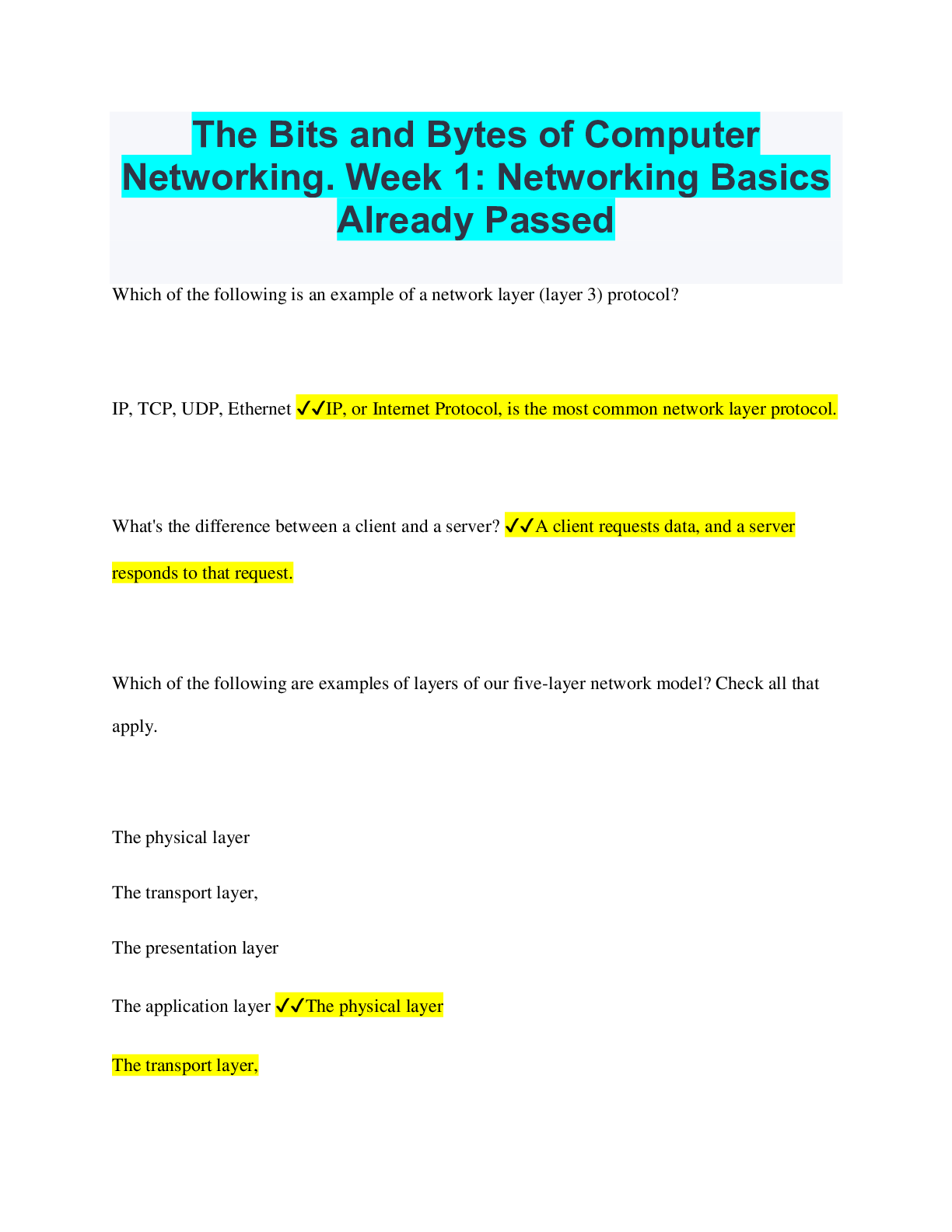
 Answered 2023.png)


